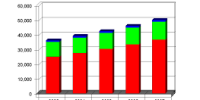Scientific Advertisement
A scientific advertisement is one that involves a scientific method of analysis, classification, assembling, conclusion, testing of the conclusion, and finally the application of the tested conclusion in the field of advertisement. It is an important work on advertising from the early 20th century and is still used today by those learning the basics and more advanced parts of the advertising field.
Advertising is, no doubt, an indispensable aspect in the business world. But unscientific advertising (i.e., trial and error method of advertising devised without due deliberation as to its scope and purpose) cannot be successful in promoting sales. It is only the scientific advertising that can be successful in attaining its main aim of promotion of sales.
Scientific advertising may be defined as properly planned advertising based on a serious deliberation of all factors that have a bearing on its success. It involves
- The development of a clear idea of the problem to be solved.
- The recognition of the alternatives to the solution of the problem.
- The collection of all data that would help in selecting a particular alternative.
Scientific advertising is one that develops and uses a scientific approach (i.e., fact-finding approach) to the formulation and execution of an advertising program. In short, scientific advertising means properly planned advertising.
Stages of Scientific Advertising
- Preliminary investigation: Preliminary investigation refers to the collection of information about the markets, products to be advertised, and the requirements of the consumers and their buying motives. This information can be collected through – market identification; product analysis; and consumer research or motivation research.
- Budgeting and media planning: Budgeting refers to the appropriation for advertising (i.e., the determination of the amount that should be spent on advertising). In scientific advertising, the media of advertising must be selected on careful consideration of the size of the market, the relative effectiveness of the various alternative media in reaching the consumers, the relative cost of the various media, etc.
- Execution of the advertising program: In scientific advertising, the actual execution of the advertising program should be in accordance with the advertising plan formulated on the basis of research and investigation.
- Testing of the results: The last phase or step in a program of scientific advertising is the testing of results. The testing of results refers to the evaluation of the performance of the advertising program in light of the advertising plan.
















